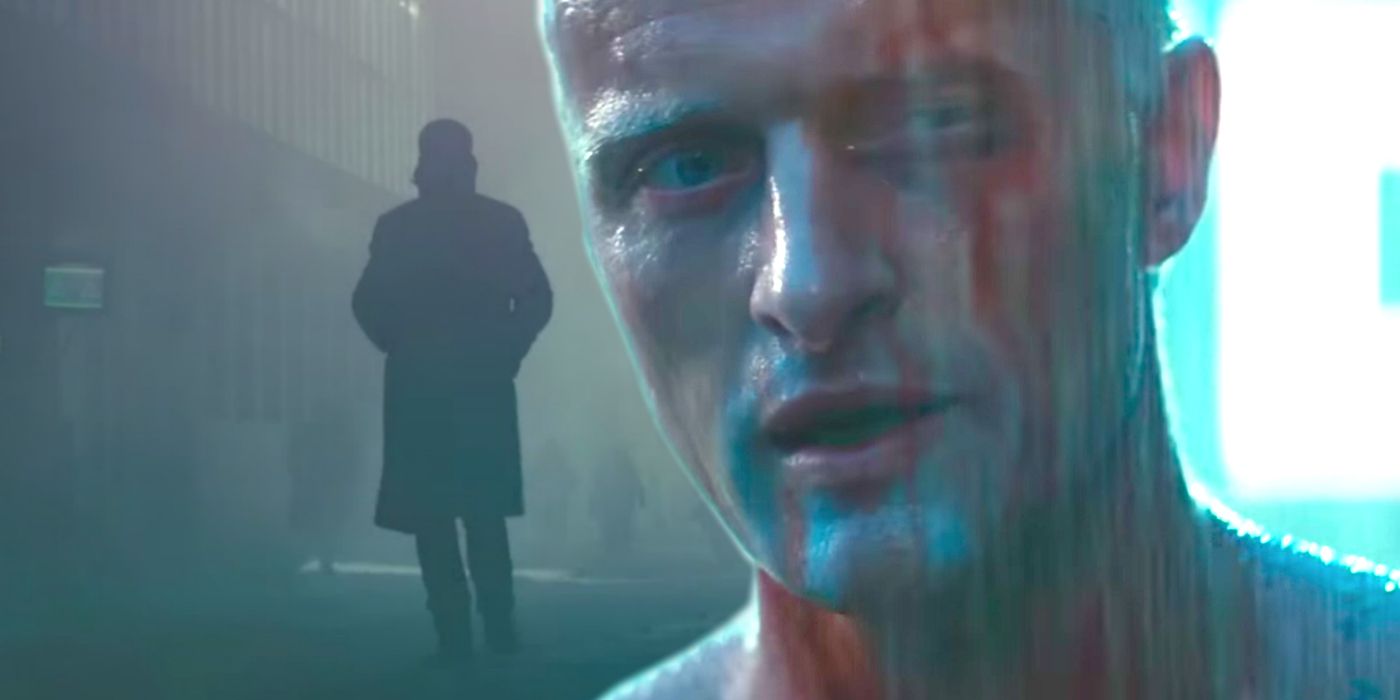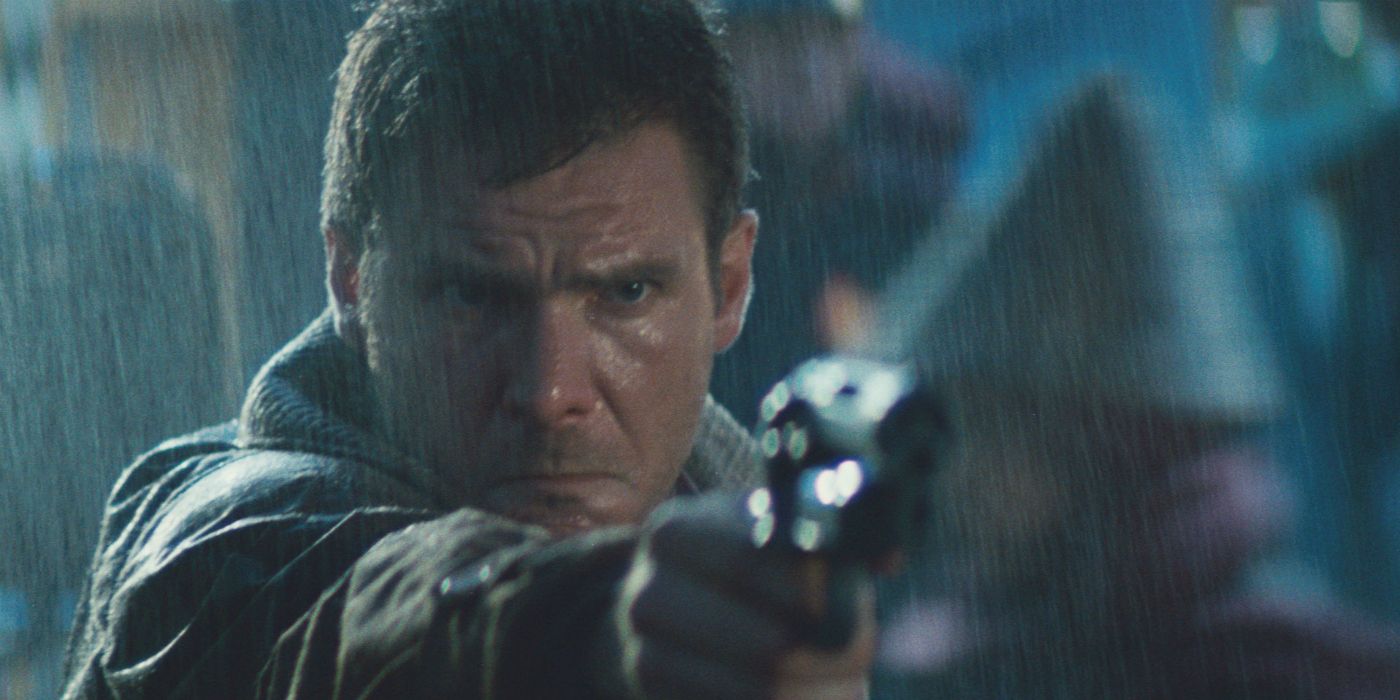It's almost always raining in the cyberpunk future of Blade Runner and its sequel Blade Runner 2049, but why is that? Released in 1982 (and repeatedly re-released in the decades since as numerous cuts materialized), Ridley Scott's Blade Runner is one of the most influential sci-fi films of the 1980s. The story of Deckard, a detective who is assigned with hunting down human-like replicants (and might be one himself), married the paranoia of Philip K Dick's source novel Do Androids Dream of Electric Sheep with neon-tinged futuristic noir settings to great effect.
Alongside Paul Verhoeven's contributions to the genre, Blade Runner is one of the most pointedly satirical slices of dark sci-fi from the decade, with the film taking aim at unchecked corporate power in the decade of Reagan's reign. As well as being a tightly plotted existential mystery, Blade Runner is one of the earliest fusions of the cyberpunk and neo-noir sub-genres. The film's pessimistic worldview is derived from both cyberpunk's cynical fear that out-of-control corporations will only grow more powerful and from film noir's dark, grimy underworld of scum and villainy. So what does all this have to do with the film's constant rain?
Scott explained the two reasons behind the film's constant precipitation, and how they tie into Blade Runner's film noir and cyberpunk roots. The first reason is disappointingly practical, as the director wasn't happy with the sets of the film and felt their shortcomings would be less noticeable if a constant stream of ever-present rain was masking every surface. But there's also a plot-centered justification. Blade Runner has a glib view of the future in which corporations wreak untold damage to the lives of civilians. This recurring theme is reflected in its constant rain, which is intended to illustrate the effects of LA's dangerously high levels of pollution. In an era when the president was removing solar panels from the roof of the White House, this illustration of the city's industrial waste causing a direct contribution to eventual environmental catastrophe was a pointed (and unfortunately prescient) reminder of the human cost behind the smoggy emissions of LA and America at large.
Blade Runner may no longer be set in the future, but the reality of climate change has kept pace with the movie's vision. Attempts at hiding cheap sets aside, Scott's image of volatile, stormy LA skies will ring true for viewers in 2020 and there's an eeriness to the sheer accuracy of Blade Runner's predictions of climate catastrophe. It's doubly understandable that Scott was so sick of corporate interference by the time Blade Runner was completed, as the director's creative control over the movie was often hampered by meddling producers throughout its creation. After the tortured production the film went through, it makes sense that the beleaguered director opted not to direct Blade Runner's belated sequel.
Luckily, the helmer left the series in the capable hands of Enemy director Denis Villeneuve. This fellow sci-fi visionary stayed true to Scott's vision, with his sequel featuring some similarly apocalyptic weather that recognized the first film's climate crisis and imagined its amplified effects in the later era of 2049, with a massive Sea Wall and even more erratic changes that build upon the world Scott created and show how Blade Runner's Earth has got even worse with time.


